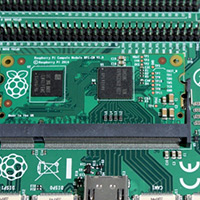

The Role of Float Glass Plates in Modern Applications
Float glass, a type of glass that is widely used in various industries, is produced through a unique manufacturing process that involves floating molten glass on top of molten tin. This innovative method yields a flat, transparent sheet that has become a staple in construction, automotive, and specialty industries. The versatility and properties of float glass plates have revolutionized how we view and interact with our environments, making them indispensable across numerous applications.
Manufacturing Process
The float glass manufacturing process, developed by Sir Alastair Pilkington in the 1950s, involves pouring molten glass onto a bed of molten tin. This procedure allows the glass to spread and form a uniform thickness. The glass will then cool and solidify as it passes through a controlled atmosphere, which prevents defects and ensures clarity. The result is a flat glass sheet with an exceptionally smooth surface, free of distortion, which is ideal for a variety of uses.
Properties of Float Glass
Float glass plates possess several properties that make them suitable for a multitude of applications. They are characterized by excellent optical clarity, high light transmission, and resistance to chemical corrosion. Additionally, float glass can be cut into different shapes and sizes, tempered for strength, or coated to enhance thermal insulation and UV protection. These properties contribute to the glass's popularity in architectural designs, vehicle manufacturing, and consumer electronics.
Uses in Architecture and Construction
In architecture, float glass plates are primarily used for windows, facades, and skylights
. Large expanses of glass enhance a building's aesthetics by allowing natural light to flood interiors while providing panoramic views of the surroundings. Furthermore, advancements in insulating glass technology have led to the development of double and triple-glazed units that offer superior thermal performance, reducing energy consumption and improving comfort levels within buildings.Companies are also now focusing on sustainability, leading to the use of float glass in energy-efficient building designs. The incorporation of advanced coatings helps to reflect excess heat while allowing visible light to penetrate, leading to reduced heating and cooling costs. This integration of float glass not only increases energy efficiency but also contributes to a building's overall sustainability profile.

Automotive Applications
In the automotive sector, float glass plays a crucial role in the construction of windshields, side windows, and rear windows. The clarity and robustness of float glass ensure that visibility is optimal while providing structural integrity to vehicles. Tempered and laminated versions of float glass are often used in vehicles; the former is more resistant to impact, while the latter typically provides enhanced safety features due to its layer of polyvinyl butyral, which holds the glass together even when shattered.
The automotive industry has also begun implementing innovations such as smart glass technology, which modifies the properties of glass plates in response to external conditions. This technology can help regulate temperature inside vehicles, contributing to enhanced comfort and energy efficiency.
Specialty and Decorative Uses
Beyond standard applications, float glass plates also find their way into specialty and decorative contexts. Artists and designers utilize float glass to create stunning installations, sculptures, and decorative pieces. The versatility of the material allows for various finishing techniques, such as etching, frosted patterns, and color treatments, expanding its aesthetic appeal.
Moreover, float glass is increasingly used in consumer electronics, including screens for televisions, smartphones, and tablets. Its durability and clarity make it an ideal choice for protective surfaces in myriad devices.
Conclusion
Float glass plates are a prime example of how innovative manufacturing processes can lead to versatile and indispensable materials in modern industry. Their unique properties and adaptability have made them essential in architecture, automotive, and specialty applications. As demand for sustainable and energy-efficient products rises, the role of float glass in various sectors is likely to grow, paving the way for future advancements that will further enhance its functionality and appeal. Whether serving as a window to the outside world or as part of a functional artistic creation, float glass plates continue to shape our interactions with our surroundings.